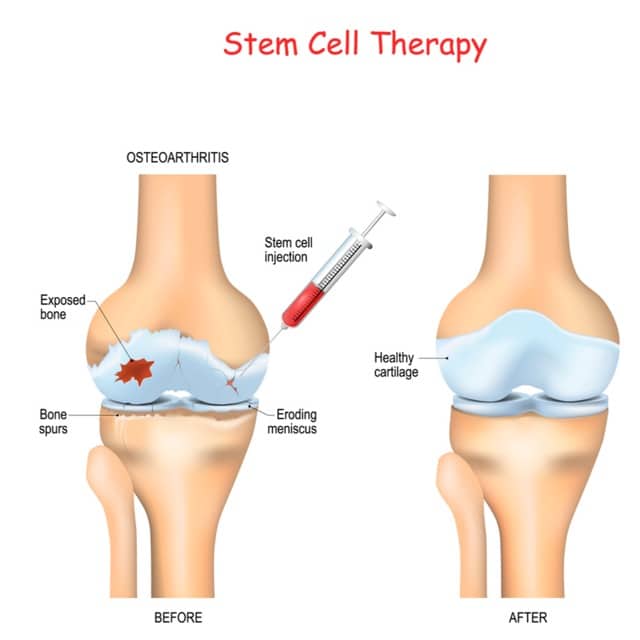Cartilage injuries, such as meniscus tears, can be painful and debilitating, affecting our ability to move freely and enjoy an active lifestyle. These injuries are a common concern, especially among athletes and individuals who engage in physically demanding activities. If you’re currently dealing with a meniscus injury, you might be asking yourself, ‘is a cartilage transplant right for me?’. We’re here to give you some more insights on meniscus tears and your treatment options so that you can make an informed decision.
Understanding Meniscus Tears
Before we dive into the intricacies of cartilage transplants, let’s begin by understanding what meniscus tears are and how they occur. The meniscus is a C-shaped cartilage in the knee that acts as a cushion and stabilizer. These tears often result from sudden twists, pivots, or traumatic events. Common symptoms include pain, swelling, and limited mobility. Traditional treatments for meniscus tears typically include rest, physical therapy, pain medication, and in severe cases, surgery to trim or repair the damaged tissue.
Get an Appointment
Complete The Form Below And We’ll Get Back To You Immediately.

Cartilage Transplants in Knee: How They Work
Cartilage transplants in the knee, also known as cartilage grafting or autologous chondrocyte implantation (ACI), are a cutting-edge medical procedure designed to address cartilage injuries. This technique involves the transplantation of healthy cartilage cells from one part of the patient’s body to the damaged area. Here’s a simplified breakdown of the procedure:
- Harvesting: First, a small sample of healthy cartilage cells is extracted from a non-weight-bearing area, often the patient’s own knee.
- Cell Cultivation: These cells are then cultivated and multiplied in a lab to create a sufficient quantity of cartilage tissue.
- Transplantation: Once an ample supply is generated, the cultivated cartilage tissue is implanted into the injured area, promoting natural healing and regeneration.
Exploring Recovery Times for Cartilage Transplants
Recovery after a cartilage transplant is a crucial aspect to consider. Unlike minor surgical procedures, cartilage transplants require an extended healing period. Patients may need to use crutches and limit weight-bearing activities for several weeks. A comprehensive rehabilitation program, including physical therapy, is essential to optimize recovery and ensure the transplanted cartilage integrates successfully into the joint.
The Risks Associated with Cartilage Transplants
While cartilage transplants offer promising results, they are not without risks. Infections, graft failure, and immune system reactions are potential complications. Moreover, strict patient selection criteria must be met for successful outcomes. Typically, cartilage transplants are not recommended for patients over 55 years of age due to reduced regenerative capacity and higher risk factors.
Before Cartilage Transplants, You Should Learn About Stem Cell Therapy
For those seeking a less invasive option with a shorter recovery time and reduced risk of complications, stem cell therapy emerges as a viable alternative to cartilage transplants. Stem cell therapy harnesses the body’s natural healing mechanisms to encourage cartilage regeneration.
How Stem Cell Therapy Works
Stem cell therapy involves the use of adult stem cells, often sourced from the patient’s bone marrow or adipose tissue. These cells are rich in regenerative potential. Here’s an overview of how the procedure works:
- Harvesting: Stem cells are extracted from the patient’s own body, ensuring compatibility and reducing the risk of rejection. In certain cases, donor cells might be used instead of harvesting stem cells from the patient. This can vary depending on the patient’s individual health history.
- Processing: The harvested stem cells are processed to concentrate and purify them.
- Injection: The concentrated stem cells are then injected directly into the damaged area, stimulating the body’s natural healing process.

Stem Cell Therapy Offers Several Advantages Over Cartilage Transplants
Stem cell therapy presents several advantages over cartilage transplants, which could severely impair your mobility for weeks on end and would require physical therapy. Cartilage transplants in the knee or other areas are no walk in the park. When it comes to stem cell therapy, you should consider the following:
Minimally Invasive
Stem cell therapy is a minimally invasive procedure compared to the more invasive cartilage transplant.
Shorter Recovery Time
Patients can typically return to their regular activities sooner after stem cell therapy. After a treatment, they can expect to have very mild swelling or bruising near the injection site for a few days.
Lower Risk of Infection
The risk of infection associated with stem cell therapy is significantly lower than that of cartilage transplants.
Broader Applicability
Stem cell therapy may be suitable for a wider range of patients, including those who do not meet the strict criteria for cartilage transplants.
Do You Have More Questions About Stem Cell Therapy? Contact GIOSTAR Chicago
If you’re considering stem cell therapy as a solution for your cartilage injury, GIOSTAR Chicago is the premier choice. GIOSTAR Chicago is part of a global franchise of pioneers in regenerative medicine. Collectively, our clinics have treated over 14,000 patients worldwide for a variety of conditions. This experience has helped us to gain firsthand knowledge of the application of stem cells.
Our clinic is renowned for its cutting-edge stem cell treatments, experienced medical professionals, and commitment to patient well-being. With a focus on regenerative medicine, we offer personalized care to help you regain your mobility and lessen your pain.
Don’t let a cartilage injury hold you back from living your best life. Contact GIOSTAR Chicago today to learn more about our stem cell therapy options and how we can help you get back on your feet.
The Final Verdict On Cartilage Transplants
While cartilage transplants have their merits, stem cell therapy offers a less invasive, faster, and safer alternative for cartilage regeneration. By choosing GIOSTAR Chicago, you’re making the best decision for your journey toward recovery and a more active life. Don’t let cartilage injuries hold you back – explore the possibilities of stem cell therapy today.
About GIOSTAR Chicago:
GIOSTAR Chicago is dedicated to developing the most advanced stem cell-based technologies and providing the best regenerative medicine for people who want to enjoy a healthy and active lifestyle.


